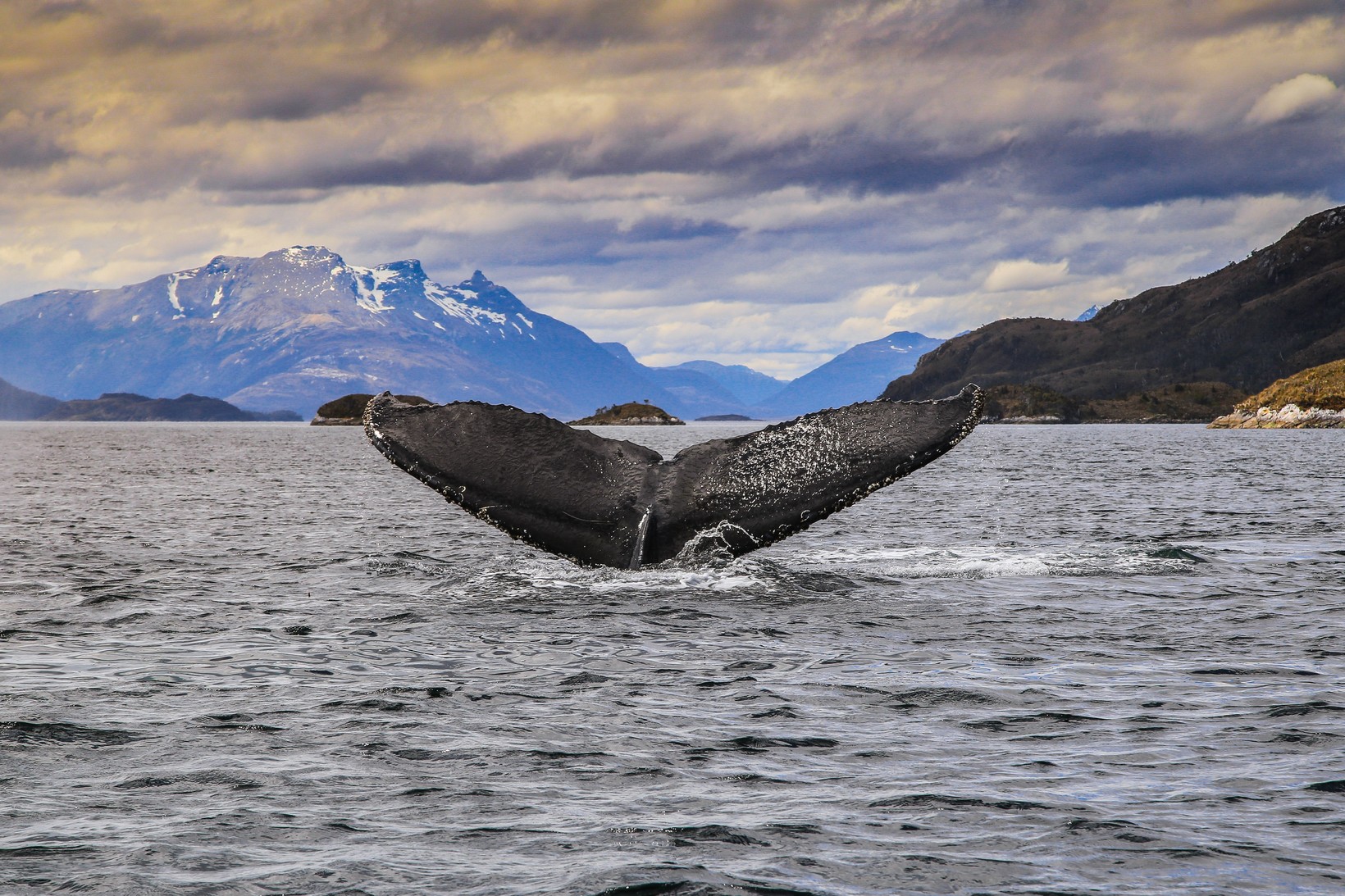Seeing a humpback whale is a life-changing experience. These mysterious animals, where we rarely see more than just their back and tail, leave a special mark in your heart and going on a whale-watching expedition is something everybody should do once in their life. The humpback whale is another iconic wildlife you can see when visiting this region.
About the Humpback whale
The humpback whale (Megaptera novaeangliae) is one of the largest whales with a length of up to 17 meters (55ft) and an approximate weight of 40,000 kg (88,184 pounds). The female whale is usually a little bit bigger than the male. Despite it being long and heavy, these whales are often seen doing impressive jumps on the surface and then hitting the water, making an impressive sound.
It is a migratory animal and can travel up to 25,000 km (15,534 miles) each year. Here in the Magallanes region, they only feed during the summer months, eating primarily krill and small fish. When the winter starts here, they migrate to tropical and subtropical waters to breed and give birth to their calf.
How to do Whale-Watching in Magallanes
Whalesound is the only company in Magallanes that offers you a multiday whale-watching experience with accommodation on the island, Carlos III. They offer 3 days, 2 nights boat tours from Punta Arenas to the Marine Park Francisco Coloane, a remote area south of Punta Arenas. You will be staying overnight in a beautiful eco dome, in one of the less-visited areas in Patagonia. The Whalesound as a tourism project arose from science. A group of biologists was studying the distribution and abundance of cetaceans in Chilean waters, with a special interest in the humpback whale. Today, science is still an important element of Whalesound. Their migratory routes are still studied, and photo identification is made to be able to recognize certain whales. You will learn more about these studies during the 3 days tour.
To book the tour, contact Whalesound directly through their website http://www.whalesound.com/
Other birds and mammals to observe
This area does not only offer whale-watching. Are you into all kind of wildlife, this are offers some very cool sightings with both common and rare-to-see species.
There is a big variety of animals to observe, like the Magellanic penguins, the skua (Cataharacta chilensis), imperial cormorant (Phalacrocorax atricep), South American tern (Sterna hirundinacea), and the less commun species like the cormorant rock, rock shag, the giant petrel (Macronectes giganteus), silver petrel, and the southern fulmar.
On the island, Carlos III, there are registers of the small stocky wader, the Fuegian snipe (Gallinago stricklandii). A very rare bird to see. You cannot walk around the island, but maybe if you pay attention, you might get the luck to see it or hear it.
Another rare and desired to see bird, is the near-threatened Striated caracara (Phalcoboenus australis). This bird has only been observed in the southernmost parts of this region, like on some isolated island shores and islets in the Magellan and Fuegian regions of Argentina and Chile and at the Falklands.
Sea lions and dolphins
Other sea mammals that sometimes can be seen it the orca whale (Orcinus orca), and the sei whale (Balaenoptera borealis). Dolphins are also observed here like the Austral whale dolphin, Peale's dolphin, the Dusky dolphin, the overa tonina, and the Chilean dolphin (C. eutropia).
Sea lions can be observed here as well, among these the Southern fur seal, the Southern elephant seal, and eventually the Leopard seal. Of otter species, the freshwater otter and the Southern river otter live in these waters.
These are just some of the species that you can be able to see during this 3 days adventure, so bring your camera and binoculars, and enjoy another remote area of Patagonia rich in wildlife and spectacular nature.
Photo credits: Whalesound
